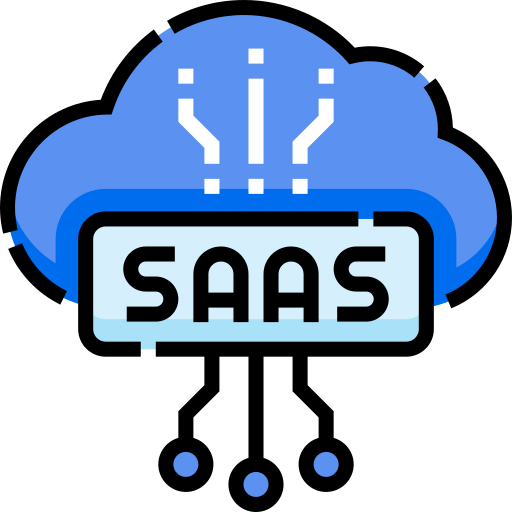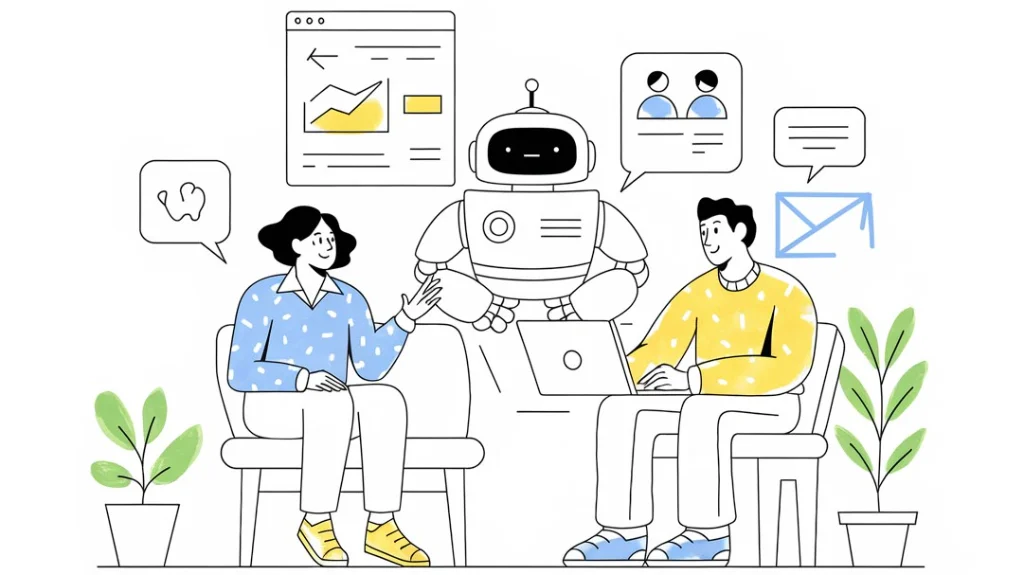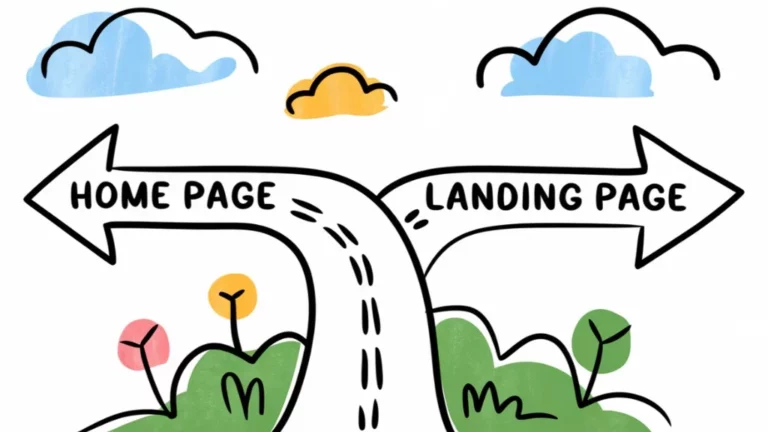No-code tools provide a realistic route to getting a functional product to market quickly, without the often daunting (and expensive) hurdle of hiring a development team. Instead of spending months and a small fortune, you can validate concepts and refine your app almost instantly. This agility is a major advantage in today's fast-paced business environment.
What Exactly Are AI No-Code Tools, and Why Are They Creating Such a Buzz?
AI no-code tools are essentially digital platforms that empower individuals to create applications, websites, and other digital products without needing to write traditional code. Think of them as user-friendly construction kits for the digital world. Platforms like Bubble, Glide, and Adalo are prime examples, offering a way for non-technical users to bring their ideas to life. According to projections:
The global market for low-code and no-code development is expected to hit "$26.9 billion by 2026," growing at an impressive rate of 23% per year.
This growth reflects a huge shift towards accessibility and speed in the tech world.
How Does Hiring a Developer Stack Up Against the No-Code Approach?
When you hire a developer (or an entire development team), you're usually working with professionals who either code your app from the ground up or use frameworks tailored specifically to your project. This method offers a high degree of flexibility and scalability, but it typically demands a significant initial investment. For instance, the average annual salary for a software developer in the U.S. is reportedly "$96,000," and freelance developers can charge anywhere from $50 to $200 per hour. These figures illustrate why the financial barrier to entry can be prohibitive for many early-stage entrepreneurs.
On the other hand, most AI no-code platforms utilize subscription models, with monthly costs generally falling between $20 and $200. This drastic difference in cost explains why so many solo entrepreneurs are initially drawn to no-code solutions. It is, in many cases, the more viable path for getting their business off the ground with minimal upfront costs.
Can AI No-Code Tools Really Produce High-Quality Apps, or Are There Caveats?
The short answer is yes, but with certain limitations. AI no-code platforms have made significant strides in recent years, with many now incorporating AI-driven functionalities such as predictive analytics, chatbot integrations, and automated workflows. Platforms such as Bubble offer surprisingly complex functionality, while Glide is excellent for rapidly deploying mobile-friendly applications. However, it’s essential to understand the constraints these platforms may impose:
- Scalability Concerns: No-code tools might struggle to manage apps that experience high user volumes or have complex backend systems. Scaling your app beyond a certain level might necessitate a transition to traditional code. This is a crucial point for any business that anticipates rapid growth.
- Customization Boundaries: Although highly flexible, no-code platforms can't cater to every conceivable feature or interaction. There may be times when the specific functionality you require is beyond their scope.
- Platform Dependency: Moving away from a no-code platform can present challenges, given that the code generated is often proprietary. This “vendor lock-in” is a factor to consider when planning long-term.
When Should Solo Entrepreneurs Choose AI No-Code Tools?
For solo entrepreneurs, AI no-code tools often make the most sense under these specific circumstances:
- Rapid MVP Development: No-code tools are ideally suited for quickly and affordably creating a Minimum Viable Product (MVP) for testing your business idea. This allows you to validate your concept with real user data before investing heavily.
- Non-Technical Founders: If you don’t have any coding experience, no-code tools eliminate the steep learning curve associated with traditional development. This levels the playing field and empowers non-technical individuals to create apps.
- Fast Iteration Cycles: If you anticipate your business model or app features evolving rapidly, no-code platforms offer the agility needed to make swift changes and deploy updates almost immediately. This is key in dynamic markets.
- Budget Constraints: When financial resources are limited, no-code tools provide a cost-effective pathway to launching your app. This is particularly important for bootstrapped startups.
When Does Hiring a Developer Become the More Sensible Option?
Despite the advantages of AI no-code, there are situations where hiring a developer is the wiser choice:
- High Complexity Requirements: If your app demands advanced algorithms, custom integrations, or a truly unique UI/UX, a developer can tailor a solution to meet those specific needs. For intricate functionality, no-code tools may fall short.
- Long-Term Scalability Goals: Developers can design systems to handle millions of users and integrate seamlessly with other services, ensuring your infrastructure can scale alongside your growth. This robustness is essential for large-scale apps.
- Desire for Full Control: Custom development gives you ownership of the source code, ensuring you aren’t locked into a specific platform. This level of autonomy can be crucial for long-term strategic decisions.
Let's Talk Numbers: What's the Cost Breakdown for Each Approach?
To illustrate the cost differences, let's examine a hypothetical project:
AI No-Code Path:
Platforms like Adalo or Bubble might cost between "$50 to $150 per month" for advanced functionalities. Assuming you dedicate six months to building and iterating, the total cost might average around $900.
Hiring a Freelance Developer:
If you hire a mid-level developer at $75 per hour for 100 hours of work, the base cost becomes 7,500. Add an additional 1,000-$2,000 for project management and revisions", and the cost could quickly surpass $9,500.
While no-code tools appear more economical initially, it's essential to acknowledge that long-term, you might eventually require developers to rebuild the application to scale, potentially incurring further expenses.
What Are Successful Entrepreneurs Saying About the No-Code vs. Developer Debate?
Ben Tossell, the founder of Makerpad (a leading no-code education platform), advocates that
No-code tools democratize entrepreneurship, enabling founders to prioritize validating their ideas before committing to significant financial investments.
His viewpoint emphasizes the value of agility and reduced risk.
Contrastingly, serial entrepreneur Andrew Gazdecki suggests that:
As a SaaS business grows, custom development often becomes inevitable. Technical debt from no-code platforms might eventually hinder growth, underscoring the importance of long-term architectural planning.
How Can Solo Entrepreneurs Maximize Their Success With No-Code Tools?
If you decide to embrace the no-code approach, consider these tips for maximizing your chances of success:
- Carefully Select the Right Platform: Conduct thorough research to find the platform best suited to your specific project. For example, Glide excels at mobile apps, while Webflow is powerful for website design.
- Engage with Community Support: Platforms like Bubble and Zapier boast vibrant communities and extensive tutorials that can help accelerate your learning. These resources are invaluable when navigating unfamiliar tools.
- Strategize for Scalability: Plan your app with future growth in mind, designing features and workflows that can transition into traditional code if needed. Thinking ahead will reduce potential issues later.
- Test and Iterate Relentlessly: No-code tools make testing with real users easy. Gather feedback and make iterative improvements to optimize your product. The ability to refine your offering quickly is invaluable.
Is a Hybrid Approach a Viable Option?
In many cases, a hybrid approach represents the best of both worlds. Start your journey using no-code tools to develop your MVP and validate your business idea. Once you have gained traction and have a steady revenue stream, consider investing in hiring developers to rebuild the app for scalability and advanced functionalities. This approach minimizes initial risk and ensures you’re not overinvesting in an unproven idea.
Final Thoughts: What's the Right Strategy for You?
Ultimately, the choice between AI no-code tools and hiring a developer depends on your individual goals, available funds, and technical skills. For solo entrepreneurs launching a SaaS product, no-code tools are an efficient and affordable way to begin. However, as your user base grows, and you need more advanced features, transitioning to custom development may become essential.
By understanding the benefits and limitations of both strategies, you can make informed decisions that align with your business needs. The key is to start small, iterate rapidly, and scale strategically. This is often the formula for success for solo entrepreneurs entering the SaaS market.








